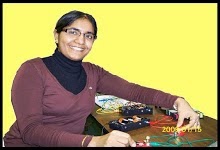- Valence electron
- Ionic Bonding- Transfer of electrons(Atom gains or loses electron,# of Protons is no longer equal to the # of Electrons)
Covalent Bonding- Sharing of electrons
when two atom share one pair of electrons- single bond
when two atom share two pairs of electrons- double bond
when two atom share three pair of electrons- triple bond
Home-work:Complete the assignment related to covalent bonding
Reminder:Test on Friday 01/29/10








